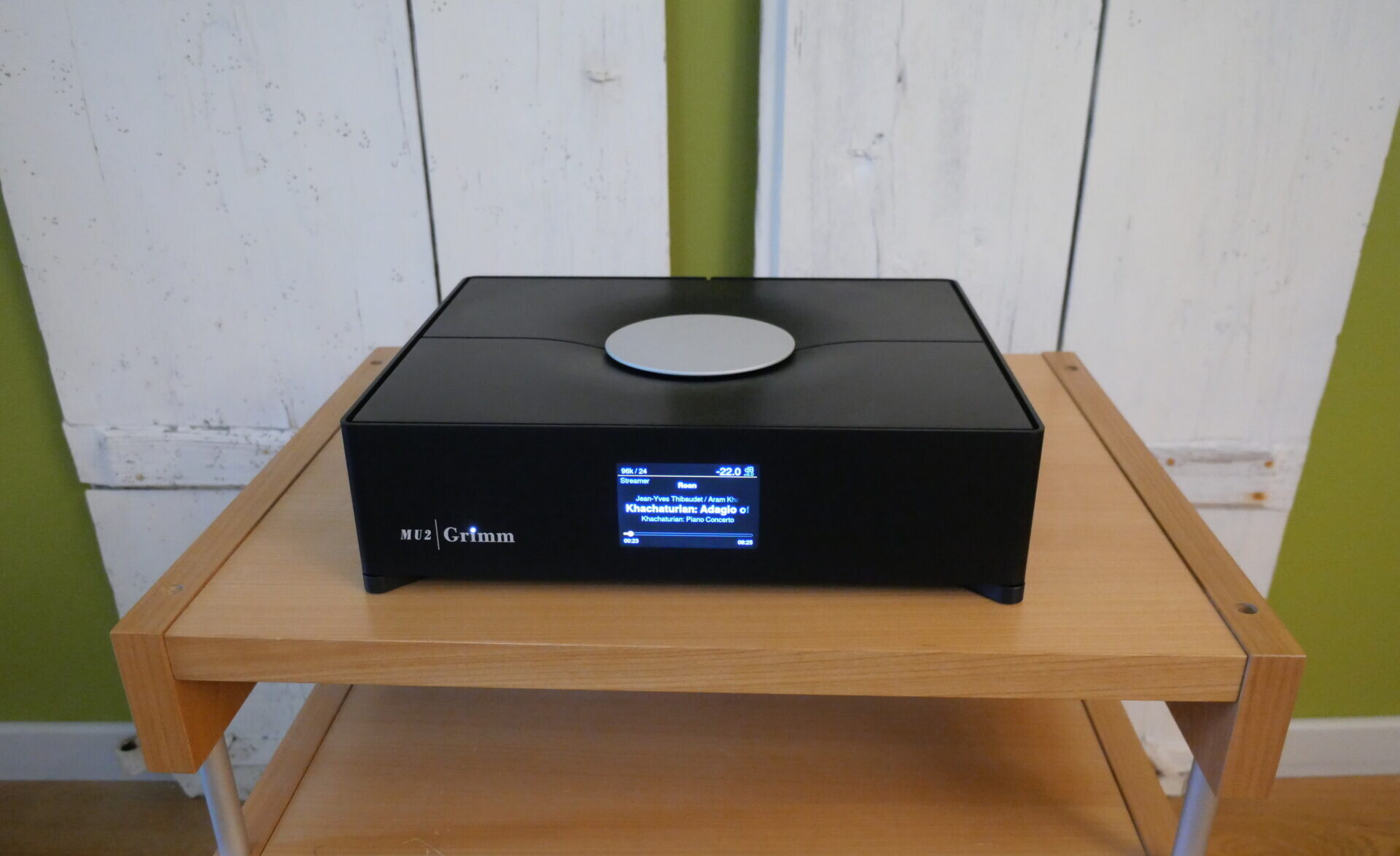This stylistic coincidence of performance and replay refocuses the listener’s attention, away from the (arguably) cosmetic and individual, towards the shape and form of the whole. What the MU2 gives up in terms of spatial coherence and focus, it regains when it comes to pace, musical momentum and purpose. Lovers of focus and transparency will doubtless find the Grimm soft and lacking in both, but that’s to miss the significance of its temporal coherence and grasp of overall pattern. The first and second movements might lack the poised, hanging, fragility of Ida Haendel or Camilla Wicks, but the sheer va-va-voom of the third movement offers impressive energy, density, towering dynamics and power – all very Mäkelä, all very JJ.
Any performance envelope that leans one way as opposed to another will always work better on some tracks than others. Play Steve Dawson’s Sweet Is The Anchor (Undertow CD-UMC-028) and the fluid, dirty groove of ‘Love Is A Blessing’ draws you in, while the subtle layers and the space engineered into the title track leave the MU2 exposed. It’s not that the track falls apart: the digital Grimm is NEVER less than musical. If just that if you know what’s there, it’s absence will be obvious. The close harmonies tend to meld rather than layer, the flanged re-verb in the opening is a bit disjointed and clumsy. But – and it’s a “but” that’s crucial – what you don’t know you can’t miss. Working up to the MU2’s delivery (rather than down to it from on high) I suspect that the easy sense of flow and seductive warmth and purpose will suck you in, high-lighting instead just what’s absent from lesser systems. That Jansen Sibelius will be sweeping and affective, with plenty of purpose and momentum. Steve Dawson’s vocals will simply be all the sweeter for those preternaturally close harmonies.

When it comes to digital replay, I suspect that for most MU2 users, it’s the performance when replaying streaming sources that’s going to be the critical consideration. As well as my own external hard-drive, the MU2 came with an internal SSD with files loaded, many of which proved familiar. What also proved familiar was the overall musical presentation, whether from locally stored files or via streaming. Yes, the locally stored files delivered both greater consistency and consistently superior results, but the character of the sound remained warm and inviting, irrespective of source. It’s a tonal and musical balance that does tend to collapse qualitative differences between recordings – or, at least, doesn’t highlight them. Even so, the differences between Qobuz and Tidal were clear, the latter’s leaner, balance and lack of presence a consistent factor when compared to the fuller, warmer and arguably more natural balance of Qobuz. You might expect the Tidal sound to suit the MU2’s character, but the presence and added temporal fluidity of Qobuz was actually exactly what the system wanted – and thrived on. More of the same and all the better for it!
Shifting to locally stored file replay, whether from the internal SSD or the external Roon Nucleus, raised the MU2’s game significantly, capable of generating a greater sense of spatial coherence and far more musical tension. Music, irrespective of genre, had a more engaging sense of life and performance, suggestive of greater dynamic and temporal integrity. The Roon Nucleus turns in a surprising performance, thanks to the addition of the Sean Jacobs PSU, but even so, the internal SSD matched or even shaded it, shorn of the need to rely on the network to transfer data.

